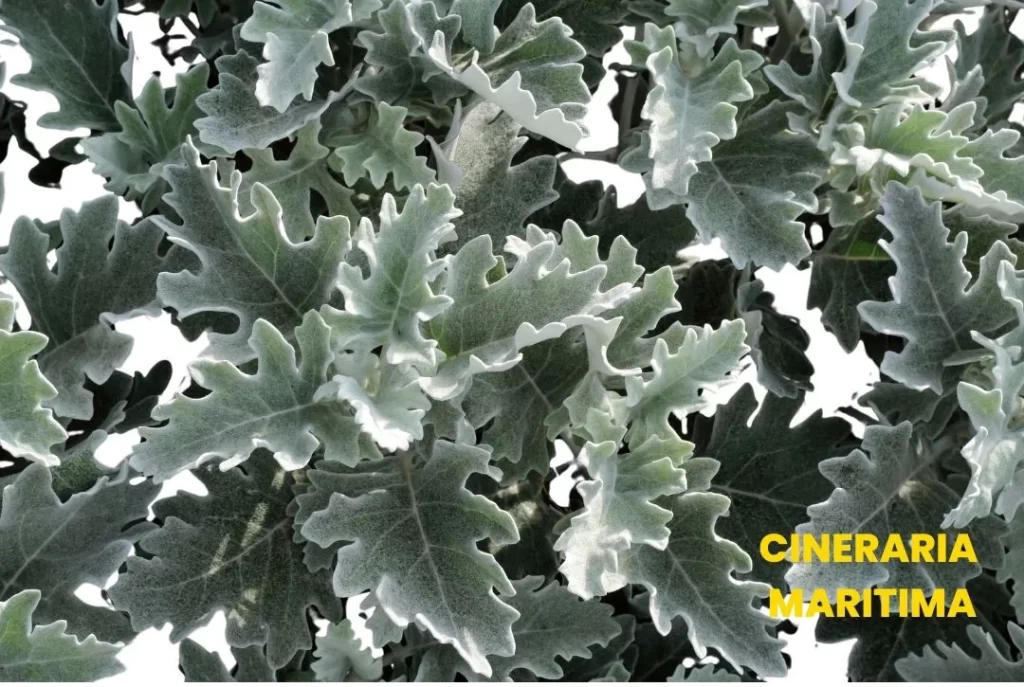Cineraria Maritima, commonly known as Dusty Miller, is a perennial herbaceous plant renowned for its medicinal properties, particularly in the treatment of eye conditions like cataracts and corneal opacities.
Its application in herbal medicine has been practiced for centuries, and it remains a topic of interest in both traditional and contemporary herbal practices.

Table of Contents
ToggleSOURCE INFORMATION
Scientific Classification
- Kingdom: Plantae
- Clade: Angiosperms
- Clade: Eudicots
- Clade: Asterids
- Order: Asterales
- Family: Asteraceae
- Genus: Cineraria
- Species: Cineraria maritima
Origin
- Cineraria Maritima is native to the Mediterranean region but has been cultivated in various parts of the world.
- Its silver-gray foliage and attractive flowers have made it popular in ornamental gardening.
- Historically, it has been used in herbal remedies for eye ailments, particularly in Europe.
Historical Facts
- The use of Cineraria Maritima dates back to ancient times, where it was employed by herbalists for its purported healing properties.
- It gained particular recognition in the 19th century for its efficacy in treating cataracts.
- Its preparation for ocular use typically involves extracting the juice from the leaves and administering it directly into the eyes.
DRUG PATHOGENESIS
- Cineraria Maritima primarily affects the eyes, especially in conditions involving opacity or clouding of the lens.
- Its active compounds are believed to enhance ocular circulation and facilitate the resorption of opacities in the cornea.
- The mechanism of action may involve anti-inflammatory and antioxidant properties that contribute to its therapeutic effects.
DIATHESIS
- Often indicated for individuals with a predisposition to eye disorders or those with a history of trauma to the eyes.
TEMPERAMENTS
- Beneficial for sensitive individuals who are prone to ocular conditions.
- It is particularly suited for those with a delicate constitution, often characterized by fair skin and light hair.
KEY CHARACTERISTICS
- Effective in treating traumatic cataracts and corneal opacities.
- Used as a topical treatment through eye drops.
- Notable for its anti-inflammatory properties.
DETAILED ORGAN SYMPTOMS
EYES
- Cataracts: Particularly useful in cases of traumatic cataracts, where the lens becomes opaque due to injury.
- Corneal Opacities: Helps reduce cloudiness in the cornea and can improve vision.
- Administration: Instilled as eye drops, one drop four to five times daily, maintained over several months for optimal effect.
GENERAL SYMPTOMS
- May provide relief in cases of eye strain or fatigue.
- Considered safe for prolonged use, provided the dosage is monitored.
MODALITIES
- Worse: Symptoms may exacerbate with prolonged eye strain or exposure to bright lights.
- Better: Improvement noted with consistent application of the remedy.
RELATIONSHIP WITH OTHER DRUGS
Comparative Remedies
- Phosphorus: For visual disturbances.
- Platanus: For cataract treatment.
- Cannabis: In cases of ocular pressure.
- Causticum: Helpful in chronic eye conditions.
- Naphthalin: For opacities.
- Ledum: For traumatic injuries.
- Natrum Muriaticum: For dry eye conditions.
- Silica: To support tissue healing.
DOSE
- Topical Use: One drop instilled into the affected eye four to five times daily.
- Duration: Treatment should be maintained for several months for best results.
Frequently Asked Questions (FAQs)
Is Cineraria Maritima safe for all ages?
- While it is generally safe, consult with a healthcare professional before use in children or those with underlying health issues.
How long does it take to see results?
- Results can vary, but consistent use over several months is typically necessary to observe significant improvement.
Can it be used alongside other medications?
- Yes, but it’s advisable to consult a healthcare provider to avoid potential interactions.
Glossary of Difficult Words
- Cataract: A condition where the lens of the eye becomes cloudy, leading to vision impairment.
- Corneal Opacity: Cloudiness or scarring of the cornea, affecting vision.
- Ocular: Relating to the eye.
- Traumatic: Resulting from injury or damage.
- Instilling: Introducing a liquid drop by drop.
- Resorption: The process of absorbing or assimilating substances.
- Anti-inflammatory: A substance that reduces inflammation or swelling.
- Oxidant: A molecule that can oxidize other molecules, potentially leading to damage in cells.
This comprehensive overview should provide a solid foundation for understanding Cineraria Maritima and its applications in herbal medicine, particularly for eye health.
If you have further questions or need more details, feel free to ask!
